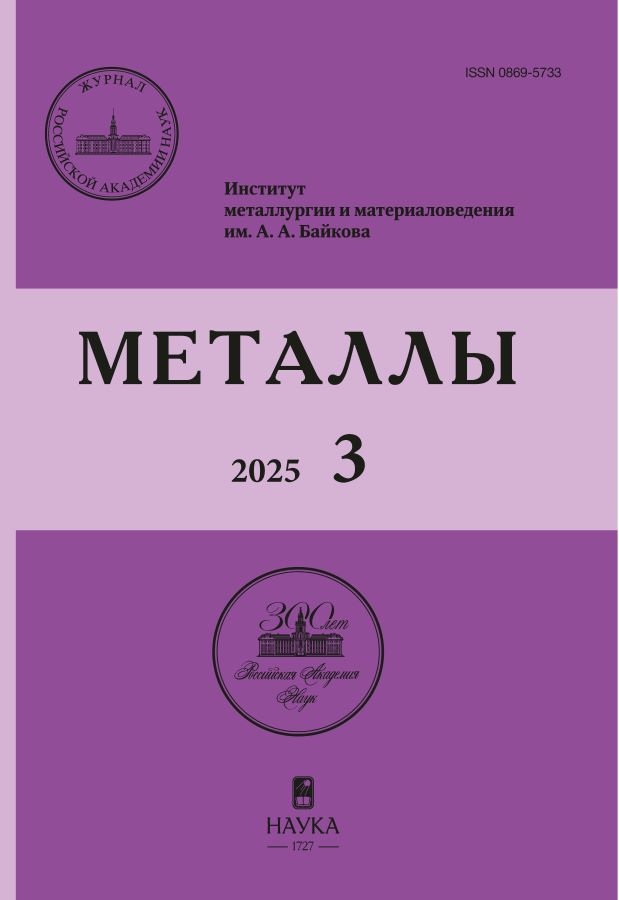STUDIES OF HYDROCHLORIC ACID DECOMPOSITION OF CLAY SLURRIES OF SILICEOUS-TITANIUM ORES
- Authors: Anisonyan K.G1, Kop'ev D.Y.1, Zablotskaya Y.V1, Olyunina T.V1, Sadykhov G.B1
-
Affiliations:
- Baikov Institute of Metallurgy and Materials Science, Russian Academy of Sciences, Moscow, Russia
- Issue: No 1 (2023)
- Pages: 3-8
- Section: Articles
- URL: https://ruspoj.com/0869-5733/article/view/654874
- DOI: https://doi.org/10.31857/S0869573323010019
- EDN: https://elibrary.ru/AHJXHV
- ID: 654874
Cite item
Abstract
The chemical and mineral compositions of gray-colored and red-colored slurries formed during the disintegration of silicon-titanium ores of the Pyzhemskoye deposit are considered, and the results of a study on their hydrochloric acid leaching of 20% HCl in the temperature range of 40-200°С are presented. It is shown that an increase in the leaching temperature leads to an increase in the degree of opening of sludge, which is associated with the decomposition of a number of mineral phases. At temperatures of 40-100°С, the decomposition of siderite and goethite proceeds. The decomposition of clay minerals develops at a temperature of 90° C and above. The process is accompanied by the release of gel-like SiO2. Under autoclave conditions, the decomposition of pseudorutyl, as well as monazite and xenotime occurs simultaneously with the transfer to a solution of cerium, neodymium and yttrium. Complete decomposition of REM minerals is achieved at a temperature of 180°С. The non-decomposable solid residue is represented by rutile, quartz, amorphous SiO2 and zircon.
About the authors
K. G Anisonyan
Baikov Institute of Metallurgy and Materials Science, Russian Academy of Sciences, Moscow, Russia
Email: kanisonyan@imet.ac.ru
D. Yu Kop'ev
Baikov Institute of Metallurgy and Materials Science, Russian Academy of Sciences, Moscow, Russia
Email: kanisonyan@imet.ac.ru
Yu. V Zablotskaya
Baikov Institute of Metallurgy and Materials Science, Russian Academy of Sciences, Moscow, Russia
Email: kanisonyan@imet.ac.ru
T. V Olyunina
Baikov Institute of Metallurgy and Materials Science, Russian Academy of Sciences, Moscow, Russia
Email: kanisonyan@imet.ac.ru
G. B Sadykhov
Baikov Institute of Metallurgy and Materials Science, Russian Academy of Sciences, Moscow, Russia
Author for correspondence.
Email: kanisonyan@imet.ac.ru
References
- Садыхов, Г.Б. Фундаментальные проблемы и перспективы использования титанового сырья в России / Г.Б. Садыхов // Изв. вузов. Черн. металлургия. 2020. Т. 63. №3-4. С. 178-194.
- Макеев, А.Б. Уникальные титановые месторождения Тимана: проблемы генезиса и возраста / А.Б. Макеев, Н.И. Брянчанинова, А.О. Красоткина // Записки горн. ин-та. 2022. Т. 255. С. 275-289.
- Садыхов, Г.Б. Минералого-технологические особенности титаноносных песчаников Пижемского месторождения / Г.Б. Садыхов, А.Б. Макеев, Д.Ю. Копьев, К.Г. Анисонян, Ю.В. Заблоцкая, Т.В. Олюнина, Б.Г. Балмаев // Металлы. 2021. № 5. С. 117-129.
- G.B. Sadykhov, D.Y. Kopyev, K.G. Anisonyan, Ju.V. Zablotskaya, T.V. Olyunina, B.G. Balmaev, "Mineralogical and technological features of the titanium-bearing sandstones of the pizhemskoye deposit".Russian Metallurgy (Metally). 2021. №9. P.1143-1154.
- Walpole, E.A. The Austpac ERMS and EARS processes for the manufacture of high-grade artificial rutile by the hydrochloric acid leaching of ilmenite / E.A. Walpole, J.D. Winter // Austpac Resources N.L. - Sydney: NSW, 2002.
- Скублов, С.Г. Изотопно-геохимические особенности циркона из Пижемского титанового месторождения (средний Тиман) как отражение гидротермальных процессов / С.Г. Скублов, А.Б. Макеев, А.О. Красоткина, С.Е. Борисовский, С.-Х. Ли, Ч.-Л. Ли // Геохимия. 2022. Т. 67. №9. С. 807-829.
- Лайнер, Ю.А. Комплексная переработка алюминийсодержащего сырья кислотными способами / Ю.А. Лайнер. - М.: Наука, 1982. 208 с.
- Резниченко В.А. Титанаты: научные основы, технология, производство / В.А. Резниченко, В.В. Аверин, Т.В. Олюнина. - М.: Наука, 2010. 267 с.
- Макеев, А.Б. Типоморфные особенности минералов титановых руд Пижемского месторождения / А.Б. Макеев // Минералогия. 2016. №1. С.24-49.
Supplementary files











